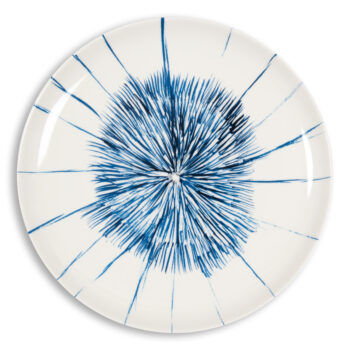
Discover the thought-provoking world of Louise Bourgeois through her captivating prints and editions. Each artwork, available for sale, offers a glimpse into the artist’s masterful exploration of emotion and form, inviting you to engage with her enduring legacy.
Louise Bourgeois (1911-2010) was a French-American artist whose extensive career spanned over seven decades, leaving an indelible mark on modern and contemporary art. Best known for her large-scale sculpture and installation artwork, Bourgeois also excelled in painting, drawing, and printmaking, exploring themes of family, sexuality, death, and the subconscious. Her art is profoundly autobiographical, delving into her own experiences to confront fear, anxiety, and the complexities of the human condition. Louise Bourgeois’ sculptures, particularly her iconic Maman series—a collection of towering spider structures—symbolize motherhood’s strength and complexity. These and other artworks, like her Cells installations, create immersive environments that invite introspection on isolation, vulnerability, and memory. Her use of diverse materials, from bronze and marble to latex and fabric, reflects the multifaceted nature of her themes, embodying softness and hardness, fragility and resilience. In her printmaking and painting, Louise Bourgeois maintained a similarly introspective and complex approach. Her fine art prints often feature organic, repeating forms and are deeply symbolic, exploring motifs of the body, nature, and familial relationships. Her paintings, though less prevalent, carry a raw, emotional charge, utilizing abstract and figurative elements to express internal landscapes. Bourgeois’ influence extends beyond her pioneering contributions to sculpture and installation art. She was a central figure in discussions on feminism in art, using her artwork to challenge traditional representations of gender and identity. Despite achieving recognition later in life, her legacy is characterized by her relentless innovation, psychological depth, and the universal resonance of her themes. Louise Bourgeois’ art transcends easy categorization, standing as a testament to her explorations of the pain and beauty of human life. Her artwork has been celebrated in major retrospectives worldwide, including The Museum of Modern Art (MoMA) in New York City in 1982, Tate Modern in London in 2007, Centre Pompidou in Paris in 2008 and Solomon R. Guggenheim Museum in New York City from 2008-2009.
Auction record: $32.8m, Sotheby’s, 2023
Available Prints by Louise Bourgeois
-
-
Louise Bourgeois, Je t’aime
1.600,00 € -
Filter by medium
- Limited Edition Print (2)
- Multiple (1)
Filter by price
Filter by size
Filter by color
Filter by movement
- Abstract Art (2)
- Figurative Art (1)
- Contemporary Art (2)
- Post-War Art (1)
- Conceptual Art (1)
- Text-based Art (1)
- Trending Artists (1)
- Women Artists (3)


